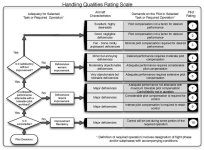You got through my "all over the place" and found that what I said "frequency is color".
Yes, that is where you have finally planted your flag. Not that you hadn't planted it there before, you had, you were just planting it in other places too.
So......let's try a shutdown and restart.
--------------------------------------------------------
Is 'light is coloured' a good place to plant a flag?
Imo, yes, it is. Light as coloured is a good model, and quite a common one, including among relevant experts. Isaac newton, apparently, might have disagreed, or he might not, but in any case he died a long time ago so we can't ask him.
And of course that model does not mean 'colour' in the same sense as experienced colour. That model allows for at least two senses of the word, with the light-colour as the real, actual one and the psychological experience as a 'mere' representation of it. So the model is arguably not really weakened by having two senses of the same term once that distinction is made. Even if it uses two definitions, it's still arguably precise.
That model is a good one and has as much explanatory power as we are currently able to obtain, imo.
But it is not the only model that does that. There is another one, also held, in turn, by other relevant experts, which works equally well, and this is why the subject can as adequately be dealt with by them without reference to colour in light. And if or when colour is then considered in this model, it is essentially put on a par with pain and other psychological phenomena. No woo involved. Just commonplace, real, actual, everyday phenomena such as pain, which are surely not in the external stimuli that can result in them. Doing that may be making a category error, or it may not. As far as I can see, we can't conclusively tell one way or the other.
Finally, making a distinction between colour and colour information might be able to bridge at least some of the differences between the two models.
And there are also other models, in which colour vision (indeed all vision) is seen as being relational, or ecological, or explained using an externalist ontology (in which internal and external processes are seen as parts of the same system or systems).
In the end, all such models are explaining the same phenomena in slightly different ways, and indeed the models all have much more in common with each other than they differ. It may be that one has or will turn out to have some advantages over the other but at this time I don't think that's yet the case.
In the meantime, I think there is room to allow for different models. And I personally much prefer the OP one, for all the various reasons discussed in the thread. You don't. That's ok. We can agree to disagree over who has the better model. And scientists and academics of all sorts can do the same, and choose their lines of approach accordingly. And this is in fact what happens.
----------------------------------------------------------
What might still be interesting would be to allow for differences in models, set aside trying to win the argument about which is right and which is wrong, and merely compare and contrast the implications of each model. It may be that both or all would imply at least some of the same things, with the caveat that some of them can't be verified or agreed on, unfortunately.
For example, and to temporarily segue to an analogy with another sense (audition) and an old, unresolvable, philosophical chestnut,
'does a tree falling in a forest make a sound if there is nothing or no one there to hear it'? The answer seems to depend on how you define 'sound'. If one person (this would not be me) says yes, because they define sound as a property of frequencies of vibrations in a media, and another (this would be me) says no because to them sound is only the perception, they may both be equally right, in their own way, or that the matter can't be resolved.
But, could both nonetheless agree that there is 'silence' in the absence of a perceiver? It doesn't seem impossible in principle, given that they may both already agree that an object in the dark is not actually coloured.


